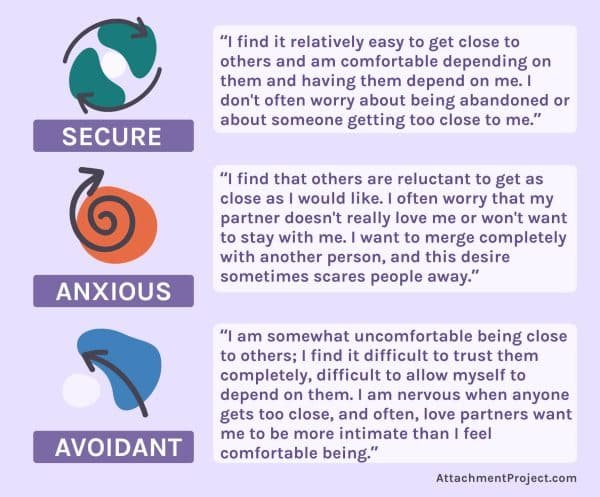Love: Attachment Style
When we bond with another human, especially romantically, there are many different components at play. There is physical attraction, shared experiences, common interests, personality traits, and compatible values to name a few. Another element is attachment style.
Attachment style is based on attachment theory developed by John Bowlby and Mary Ainsworth in the 1960s. Essentially the theory categorized three different ways a child bonds to its primary caregiver which then further indicated how that child would develop significant adult relationships. The primary test in their research was called the Strange Situation. Here is the set-up of this fascinating study:
Strange Situation
Mother and child (between 1-2 years of age) go into an unfamiliar room with toys. The child is seated in the middle of the room. A stranger enters the room. Mom leaves, stranger stays. Mom comes back, and the stranger leaves. The stranger leaves and the child is alone. The stranger comes back rather than the Mom. Mom comes back and the stranger leaves. All scenarios are observed watching specifically for the child’s interaction with the Mom. Is there comfort with the exchange of adults? Is there distress when Mom is not in the room? Is there no reaction when Mom returns? The results determine the type of attachment style.
The type of attachment style we had as children often factors into the partners we choose as we become adults because it is our primary bonding example. Of course, attachment can change throughout the years due to life events and trauma. Attachment is not a fixed state, but it is a helpful guide to better understand ourselves and our relationships.
Attachment Styles
Secure: If as a child your needs were met and you felt an overall attunement from your primary caregivers, then you probably fit into the 50-60% of adults with secure attachment. As an adult, this looks like someone who can be vulnerable without fear, has clear boundaries, a strong self-esteem, and has emotional adaptability.
Anxious: Also called “pre-occupied” or “ambivalent,” this style tends to show up as a person being needy, having a deep hunger for connection, lacking self-esteem and/or confidence, and often experiencing jealousy or fears of abandonment. This results from parenting or repeated life situations in which they didn’t feel seen or heard, had inconsistent care, or the needs of their primary caregiver were seen as more important than that of the child.
Avoidant: People who fall into this category, also referred to as “dismissive,” can seem aloof to deeper connections and perhaps distant in romantic partnerships. They fear vulnerability and true intimacy. They can be quite social and independent, but often their interactions remain surface-level. As children, they may have experienced little validation for their feelings and rigid emotional connection from their parents.
Disorganized: This category was added in the late 80s and is often associated with childhood trauma. It is a combination of the toughest parts of both anxious and avoidant styles. An example is desperately seeking reassurance of love, but then rejecting it vehemently. Less than 10% of the population shows up as this type of attachment style.
As I mentioned before, your attachment style is not fixed. It can even change with different relationships. So why is it important? Assessing your attachment style will allow you to deepen your understanding of who you are and why you behave the way you do. I’ve attached a link to an online quiz and website with further information about attachment styles and theory. Happy exploring!

